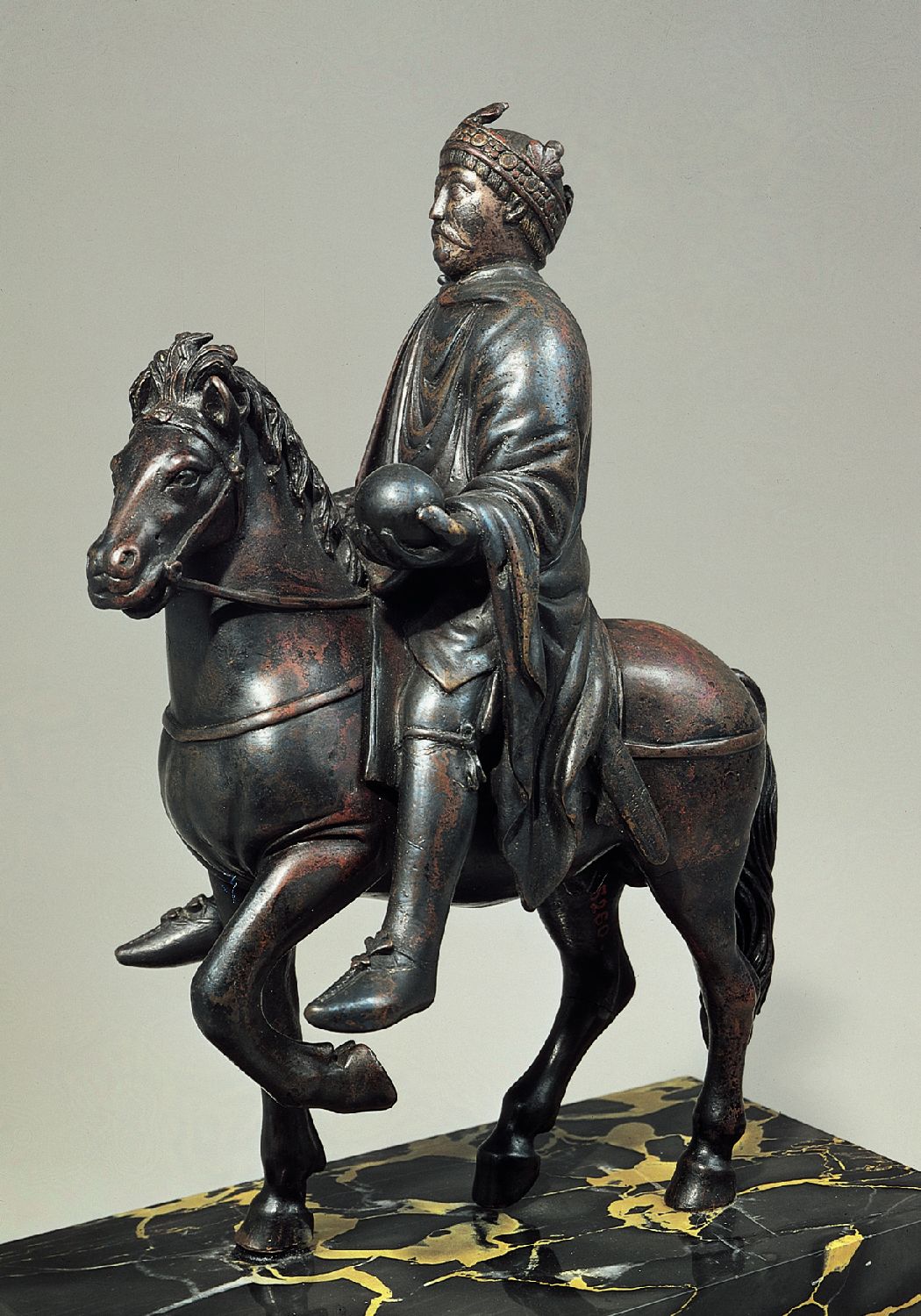This little bronze statue represents a Carolingian king on horseback. The Carolingians were an early medieval dynasty who ruled over much of Western Europe. Their founder was the famous Charlemagne (c. 747 - c. 814), who may be the king depicted in this statue. The other possibility is his grandson Charles II (823-877), often called Charles the Bald.
Charlemagne was responsible for promoting a resurgence in arts, literature, and learning, which had faded away in Western Europe after the fall of Rome. He wanted to revive classical ideas and put them in the service of Christianity. This statue is a great example of that.
The equestrian statue, which shows a leader sitting on a horse, was popular among ancient Roman emperors. Many of such statues, usually massive ones, were made in antiquity. Charlemagne and his successors considered themselves to be the new Roman emperors, and they were actually crowned as such by the Pope. Therefore, the equestrian statue iconography would have been very important to any Carolingian monarch.
It’s interesting to note that the statuette was cast in several separate pieces, and the horse may be a reused antique piece. The work as it looks now was found in the cathedral of Metz, in France, and it’s now in the Louvre Museum.
- Alexandra Kiely


 Unknown Artist
Unknown Artist